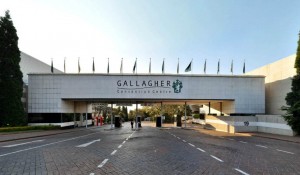 It was Abraham Maslow who said, “in any given moment we have two options: to step forward into growth or to step back into safety” of course the truth in this statement is constantly present in our daily lives, mankind’s progress is fundamentally bound to moving from the status quo to something better.
It was Abraham Maslow who said, “in any given moment we have two options: to step forward into growth or to step back into safety” of course the truth in this statement is constantly present in our daily lives, mankind’s progress is fundamentally bound to moving from the status quo to something better.
Progress in and of itself represents significant risk and as a consequence weighing up the advantages of a future unknown versus a known state of the present day means that the more flighty and risk averse among us will not venture into a realm of unpredictable outcomes without confidence in our tea leaves or crystal ball.
And so the worm turns with regard to the choices we make with respect to business transformation. Unfortunately for many businesses the only way to remain competitive and in fact to grow, is through brazen risk-taking albeit calculated – calculated risks if you will.
Simple risks like mergers and acquisitions of similar or compatible entities and then the more daring ones that involve breaking into new markets and working on new and innovative initiatives, projects and products are the meat and potatoes of vibrant growing business.
Stepping forward by default implies progress and although missteps might be taken in the forward progression it has to be appreciated that a failure to act, to in fact freeze and not move will result ultimately in stagnation and will likely see the demise of the business.
Standing (or sitting) defiant
 For me, perhaps the most striking example of this manifested itself in the early 1970’s when an uncle of mine stood in defiance like the ill-fated King Canute in front of the ocean waves, as a tidal wave of innovation in the fresh-baked goods industry washed over his once profitable ‘modern’ bakery business.
For me, perhaps the most striking example of this manifested itself in the early 1970’s when an uncle of mine stood in defiance like the ill-fated King Canute in front of the ocean waves, as a tidal wave of innovation in the fresh-baked goods industry washed over his once profitable ‘modern’ bakery business.
Undoubtedly inheriting his business acumen from his father T Gallagher, who ran a legendary Cafe de Move On or mobile vending eatery during the boom times of the Johannesburg gold rush at 5 De Korte street, Braamfontein, the young Harold would go on to establish Gallagher’s Golden Seal bakery in the 1920’s and he would continuously invest in new technology as it became available.
But then in the 1960’s a new kind of bread baking process known as the Chorleywood bread process (CBP) would overtake him and effectively destroy a business that he had built over more than 40 years. For an unknown reason, he would hesitate, not strike for the opportunity and altogether miss an opportunity that would see his competitors rapidly overtake him.
The traditional method of making bread is one where ingredients are mixed together to form a dough. This dough is then fermented for up to three hours. The process changes the dough from a dense mass into an elastic product which is then cooked and cooled. Known as the bulk fermentation process or BFP, this is pretty much reserved as a method for boutique and artisinal bakeries today.
Staying current
![fiber-optic-cables-sensors-bread-resized-600[1]](http://www.jonesassociates.com/wp-content/uploads/2014/09/fiber-optic-cables-sensors-bread-resized-6001-300x200.png) In the new CBP process, the bread is made much faster and as a consequence baking equipment is used more efficiently and a higher yield is gained from the bakery pans and ovens and mixing equipment. In addition to the contracted time, the product is more consistent and standardized and allows the use of lower-protein wheats which in turn reduces total processing time.
In the new CBP process, the bread is made much faster and as a consequence baking equipment is used more efficiently and a higher yield is gained from the bakery pans and ovens and mixing equipment. In addition to the contracted time, the product is more consistent and standardized and allows the use of lower-protein wheats which in turn reduces total processing time.
Competitors quickly adopted the new process and were able to yield a more consistent loaf at lower costs and in much higher volumes and ultimately eroded the well established Gallagher’s Bakery brand.
Although the high margin luxury cake making business would continue into the late 1970’s and early 1980’s, the bread baking business for Gallagher’s was effectively dead and this was the mainstay of the bakery.
It’s difficult to know whether the decision to do nothing resulted from an unwillingness to keep up with the times and to take what he considered a safe path, or simply the response of a tired gentleman in his 70’s who had given up the fight.
What I know from anecdotes passed to me by family members is that he had been made a proposal to get bought out but had refused because he was told that the name Gallagher’s would no longer be attached to the business – so perhaps Ego in this instance was the business’ undoing.
An ironic twist to the story is that the weekend recreational ‘farm’ that Harold Gallagher would travel to periodically with my Grandmother and parents became the home to an exposition and conference centre at Halfway House some years after he passed away and known today as “Gallagher Convention Centre“.




